
Russia was once home to almost 80 percent of the world’s Jewish population. Today, it is practically impossible to put a precise figure on how many Jews live in Russia. But they continue to noticeably impact the life of the country. More than 100 cities have their own Jewish communities. There is even an administrative area in the Far East called the ‘Jewish Autonomous Region’, a relic of Stalin’s utopian project to create a Soviet “promised land”.
Every year, under the supervision of the Federation of Jewish Communities of Russia, new synagogues are opened and historical ones are restored. Let's take a look at the most interesting ones.
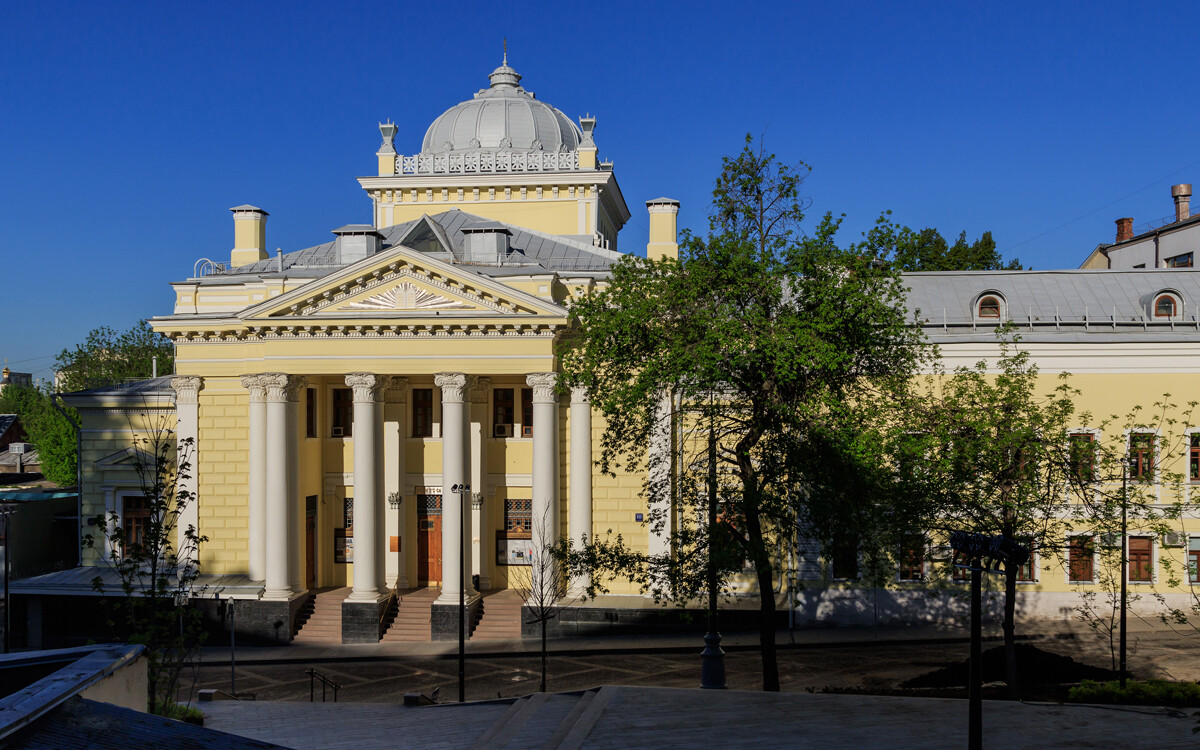
In the 1850s, Emperor Alexander II relaxed the laws on the Jewish Pale of Settlement. By acquiring the status of merchant of the 1st guild, Jews could live outside the Pale. Later, Jewish scientists, students and craftsmen were allowed to settle in big cities, including Moscow and St. Petersburg.

As the Jewish population of Moscow grew, Lazar Polyakov, head of the city’s Jewish community, asked the city governor for permission to build a prayer house. Polyakov himself allocated the money and the construction was completed as early as 1891. The synagogue is crowned by a dome with a Star of David.
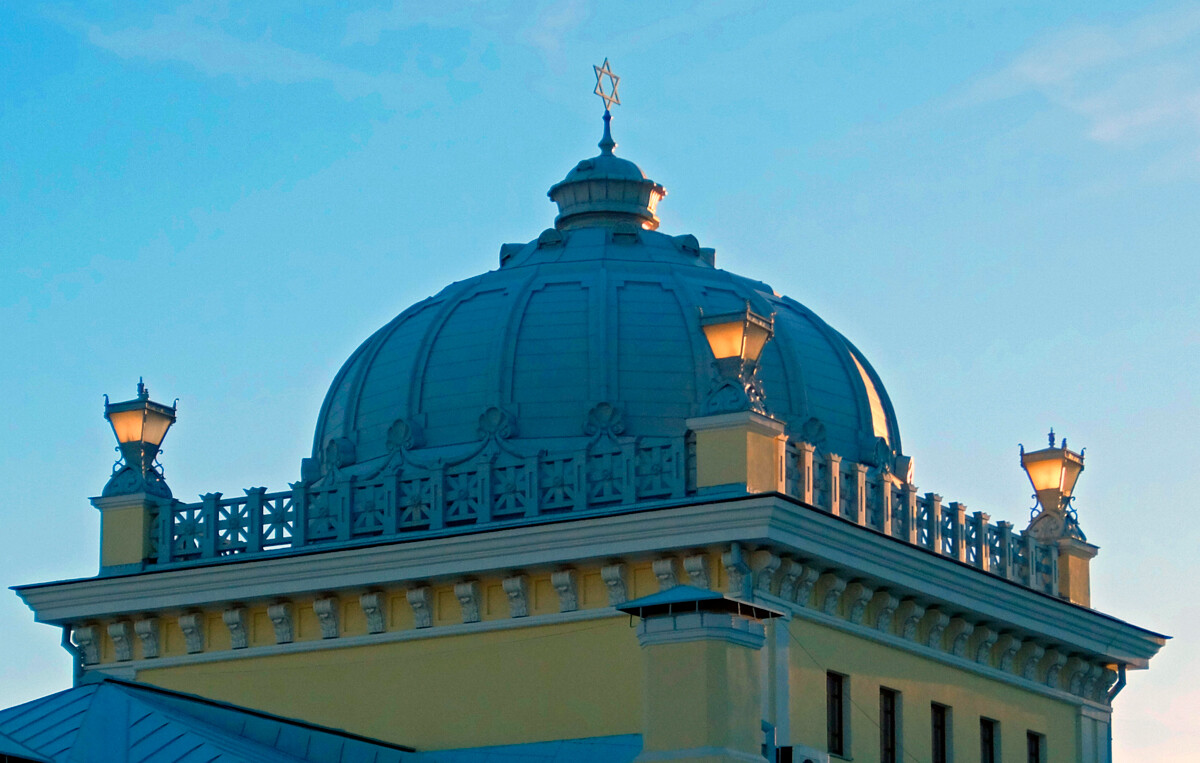
Owing to a new wave of anti-Semitism, the synagogue did not open to worshippers until 1906. And, during the Soviet period, it was closed again. Only after perestroika was the building given back to the Jewish community and, in the 2000s, the synagogue was restored. It is the largest synagogue in Moscow ( there are five in total).

This synagogue in Moscow was built in 1883 as a private domestic synagogue for Lazar Polyakov, head of the Jewish community. The synagogue was closed in 1937. After the collapse of the USSR, it was handed over to the community of Chabad-Lubavitch Hasidic Jews.
The modern building is extremely interesting: The main façade is a glass curtain wall behind which are the synagogue’s old wall and a symbolic wailing wall. An unusual architectural feature is the corner tower, the window of which is decorated with a ‘Hanukkah menorah’, a nine-branched candelabrum.
Today, the synagogue has three prayer halls, a higher Talmudic school (the Machon Ran Yeshiva) and a museum commemorating the Jews who died in the 20th century.

This is another synagogue built thanks to Alexander II, who granted permission for it in 1869. The construction of the synagogue, which is in the Moorish style, was only completed by 1893 - at first, it took a long time to find the funds and a site for it and then it took a long time to build.
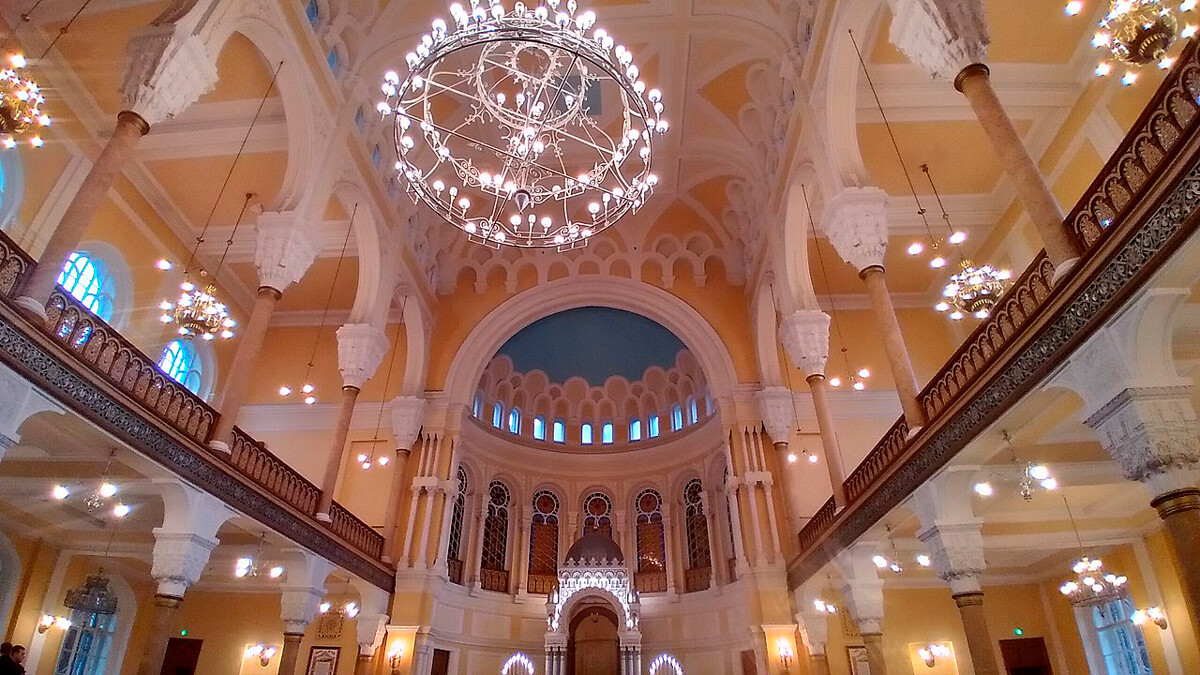
The prayer house stayed open throughout the Soviet period, closing only briefly.
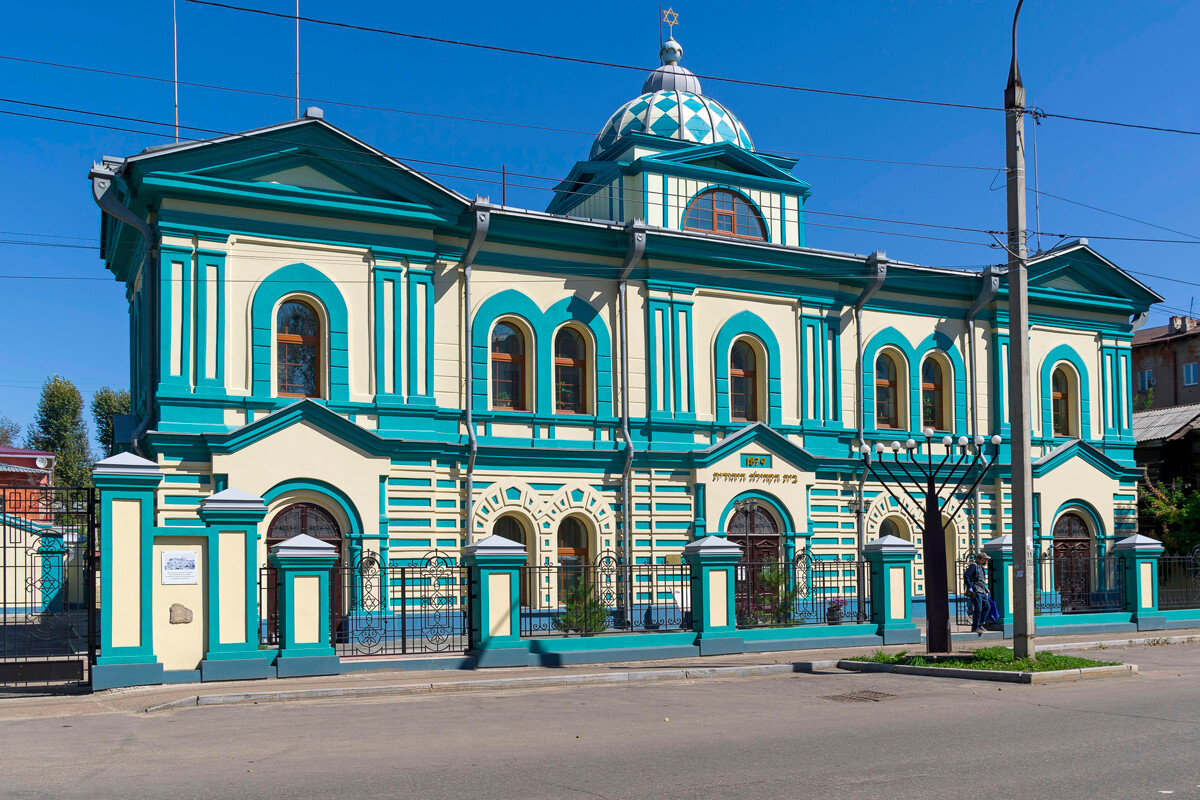
The Irkutsk Jewish community marked its 200th anniversary in 2018. The first Jews in Siberia were deportees and inmates of labor colonies and Irkutsk became their religious center. Today, the local synagogue is the oldest functioning synagogue in Russia.
In the Soviet period, the synagogue was closed for a long time, but, after perestroika, it was returned to the Irkutsk community.
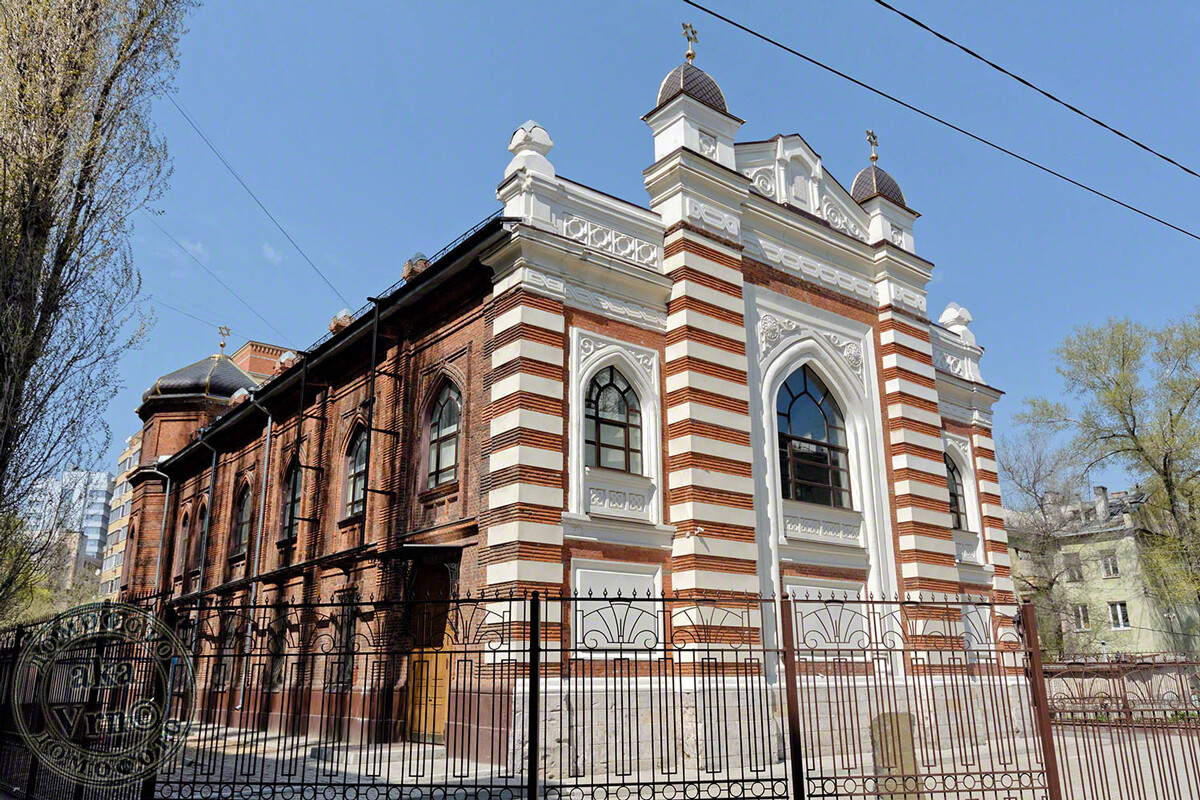
Several thousand Jews lived in Voronezh in the early 20th century (there were more than 6,000 by 1917). The synagogue in Moorish Revival style was built in 1903. In the Soviet period, the building was used as a warehouse and in World War II it was damaged by a bomb.

The synagogue was only transferred to the Jewish community again in 1997 and, after lengthy restoration, it reopened to worshippers on the 110th anniversary of its construction.

More than one thousand Jews lived in Samara towards the end of the 19th century and they asked the city authorities for permission to put up a large synagogue. The prayer house for a thousand worshippers - the biggest in Volga Region - was ready by 1908, having been funded by the city’s merchants.
A house of culture was housed in the building in the Soviet period, but, in the 1990s, it was given back to the community. The synagogue is currently closed for restoration.

A large number of Jewish merchants traveled to Nizhny Novgorod, the trading center of the Russian Empire, by the first quarter of the 19th century. And there was even a temporary synagogue in the grounds of the country’s biggest commercial fair. A permanent synagogue had been built in the city by 1883, while another was put up in 1910. There were also Jewish clubs and schools, in which teaching was conducted in Yiddish.
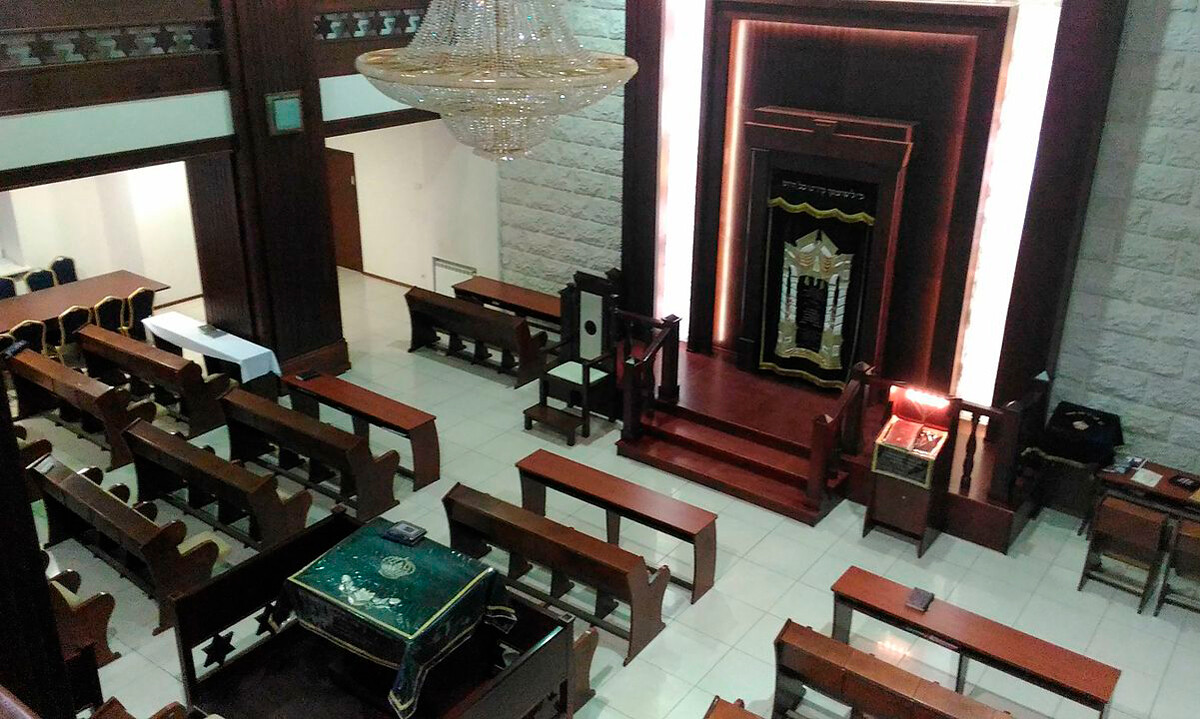
The synagogue was closed to Jews in the 1930s, but, after the collapse of the USSR, it, too, was given back to the community. The prayer hall was restored and a kosher restaurant and grocery store were opened at the synagogue. Today, out of the city’s 20,000-strong Jewish population, a quarter takes an active part in the life of the community.
Jews received their own ethnic-territorial administrative entity in the Soviet Far East in the late 1920s. Today, Jews make up just one percent of the region’s population, but there are two Jewish communities and each one has its own synagogue.
The Beit Menachem Synagogue in Birobidzhan was built at the initiative of the Freud community in 2004 to mark the 70th anniversary of the founding of the region.
A synagogue was erected in Bryansk in 1891, but, in the Soviet period, it was used as a club for the local garment factory. The building was returned to the local community in the 2010s and a lengthy restoration began during which a hiding place containing old prayer books was discovered in the recess of a wall.
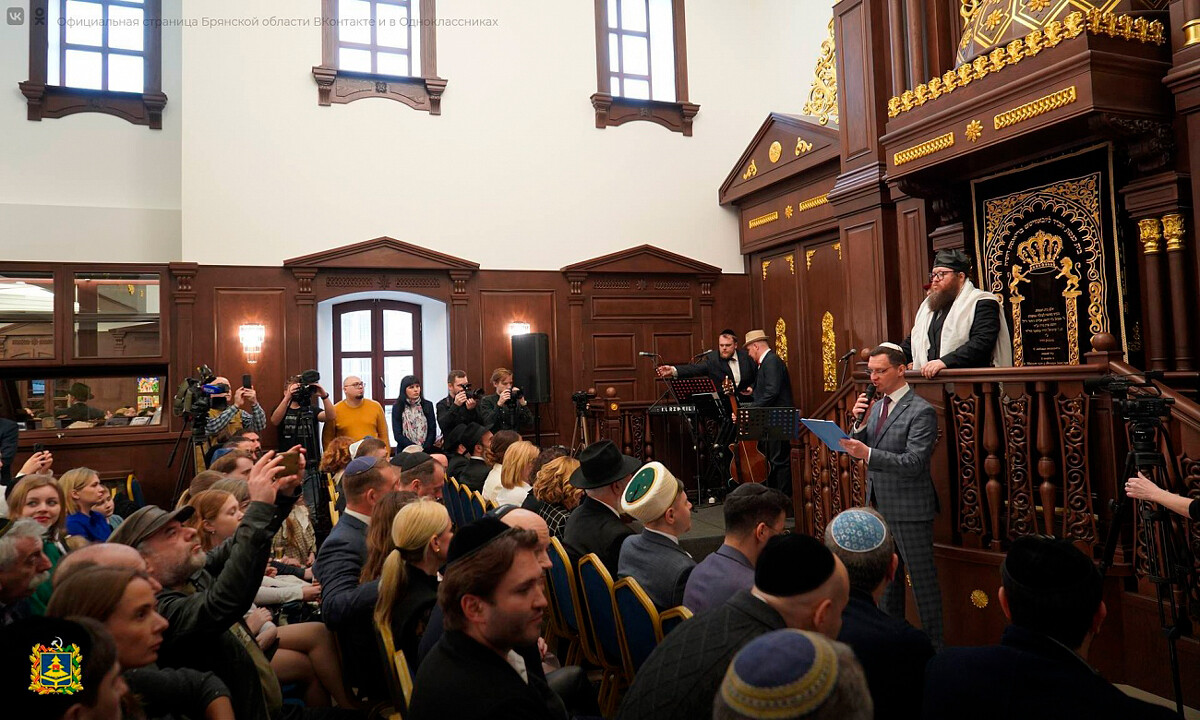
The synagogue reopened to believers in 2023, giving a fresh boost to the life of the Bryansk community and becoming a new cultural and spiritual center.

In the 19th century, when Kaliningrad was still the Prussian city of Königsberg, a synagogue was built there for the local Jewish community. But, after the Nazis came to power, the synagogue was burnt down in the Kristallnacht events of 1938.

A new synagogue was built in its place in 2018, its external appearance inspired by the architecture of its predecessor. It not only has a prayer hall with stained glass designs, but also a library and a kosher dining area.
Dear readers,
Our website and social media accounts are under threat of being restricted or banned, due to the current circumstances. So, to keep up with our latest content, simply do the following:
If using any of Russia Beyond's content, partly or in full, always provide an active hyperlink to the original material.
Subscribe
to our newsletter!
Get the week's best stories straight to your inbox